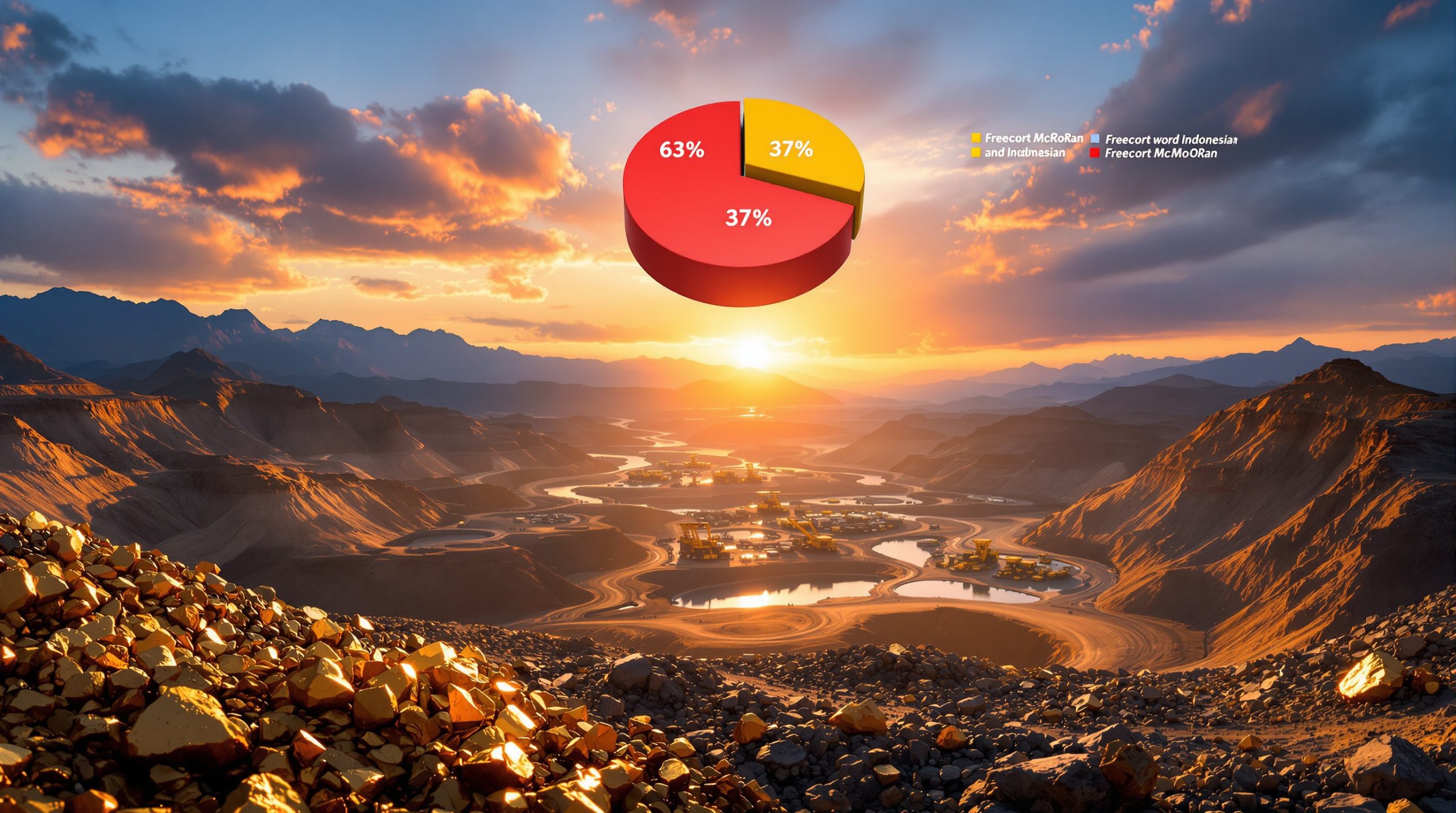Why Are Central Banks Stockpiling Gold?
The Unprecedented Shift in Reserve Management
Central banks worldwide have dramatically increased their gold purchases in recent years, with annual acquisitions exceeding 1,000 tonnes—more than double their historical average of 400-500 tonnes per year. According to the World Gold Council, central banks purchased 1,037 tonnes of gold in 2023 alone, marking the second-highest annual total on record. This significant shift represents a fundamental change in how central banks view their reserve assets.
The scale of this transformation cannot be overstated. For decades, central banks maintained relatively stable gold holdings, occasionally acting as net sellers. The current buying spree signals a profound reassessment of gold's role in the global financial system and growing concerns about traditional reserve assets.
Diversification Beyond the Dollar
The primary motivation behind this gold-buying surge is diversification away from traditional reserve currencies, particularly the US dollar. Central banks are increasingly wary of overexposure to any single currency, especially as geopolitical tensions rise and sanctions become more commonplace in international relations.
The 2022 freezing of Russian central bank assets served as a watershed moment, demonstrating to central banks worldwide that foreign currency reserves could be neutralized through sanctions. Gold, being a physical asset typically held domestically, provides protection against such asset freezes and offers sovereignty that dollar reserves cannot match.
Financial institutions are taking note of this paradigm shift. Morgan Stanley recently adjusted their traditional 60/40 portfolio recommendation (60% stocks, 40% bonds) to include a substantial gold allocation—suggesting 60% stocks, 20% bonds, and 20% gold. This unprecedented move by a major financial institution reflects growing concerns about inflation risks and diminishing confidence in bonds as a safe haven.
Protection Against Inflation and Economic Uncertainty
With global inflation concerns persisting despite central bank efforts, gold's historical role as an inflation hedge has become increasingly attractive. Central banks recognize that gold prices analysis typically maintains its purchasing power during periods of high inflation, unlike fiat currencies that can rapidly lose value.
Economic uncertainty has also driven this trend. Budget deficits, mounting debts, and unpredictable monetary policies in major economies have created an environment where gold's stability becomes more valuable. During periods of market volatility, gold often moves independently from traditional financial assets, providing diversification benefits that are increasingly important in today's interconnected financial markets.
Which Central Banks Are Leading the Gold Rush?
Emerging Markets at the Forefront
Emerging market economies have been the most aggressive gold purchasers, fundamentally reshaping their reserve portfolios to reduce dependence on Western currencies and financial systems:
China has implemented a consistent monthly gold purchasing program, increasing its official reserves to over 2,200 tonnes—though many analysts believe their actual holdings may be significantly higher. The People's Bank of China has announced gold purchases nearly every month since late 2022, demonstrating a strategic commitment to gold accumulation.
Turkey has conducted one of the most aggressive buying programs, with over two years of consecutive monthly purchases. Turkish gold reserves now represent approximately 30% of their total reserves, reflecting both economic strategy and cultural affinity for the precious metal.
Poland has emerged as a significant buyer, with substantial purchases that have tripled their gold reserves since 2018. The National Bank of Poland has explicitly stated this represents a strategic diversification of national reserves.
India has steadily accumulated gold, bringing its reserves to approximately 800 tonnes. The Reserve Bank of India has cited portfolio diversification and risk management as key motivations for these purchases.
Kazakhstan has maintained a consistent buying program for years, building gold reserves that now constitute about 70% of their total reserves—one of the highest percentages globally for a major economy.
Advanced Economies Joining the Trend
Even traditionally conservative central banks in developed economies have begun reassessing their gold positions:
The Czech National Bank has conducted an extensive buying program, consistently adding gold to its reserves for over two years. This represents a significant shift for a European central bank that had previously maintained stable gold holdings.
The National Bank of Hungary made headlines by increasing its gold reserves tenfold since 2018, with Governor György Matolcsy explicitly stating that gold provides a "safety line" during times of structural changes in the international financial system.
The Central Bank of Ireland has expanded its gold holdings after decades of stability, reflecting a broader trend among European central banks to reconsider gold's role in their reserve portfolios.
These patterns reveal that central banks gold buying is no longer limited to nations traditionally skeptical of Western financial institutions but has become a mainstream reserve management strategy across diverse economies.
How Has Central Bank Buying Impacted Gold Prices?
Record Price Movements
Gold has surged to unprecedented levels, approaching $4,000 per ounce—a dramatic increase from around $1,800 just two years ago. This remarkable price movement correlates strongly with increased central bank demand, creating a self-reinforcing cycle where higher prices validate the decision to buy more gold.
The price trajectory has been particularly steep since 2022, when central bank purchasing accelerated dramatically. Unlike previous gold bull markets that were primarily driven by investor demand or inflation fears, the current gold market price surge has been underpinned by consistent central bank buying, providing a more stable foundation for price appreciation.
Silver has also benefited from this trend, climbing above $47 per ounce and approaching its previous double top near $50. Analysts suggest silver could reach $100 or higher in the coming years as monetary concerns spread beyond central banks to retail investors seeking more affordable precious metals exposure.
Supply-Demand Imbalance
The gold market faces a fundamental supply constraint: annual mine production averages approximately 3,500 tonnes globally, while central banks gold buying alone has consumed nearly a third of this supply in recent years. This imbalance, combined with ongoing investment and jewelry demand, creates persistent upward pressure on prices.
Gold mining production cannot be rapidly expanded in response to higher prices. New mine development typically takes 5-10 years from discovery to production, creating a natural ceiling on supply growth. Meanwhile, existing mines face declining ore grades, increasing extraction costs, and growing regulatory hurdles, further constraining supply responsiveness.
Recycling provides some additional supply, but historically this source only increases significantly during periods of economic hardship when consumers sell personal gold holdings out of necessity. In the current environment, with inflation concerns mounting, many retail holders are reluctant to sell their physical gold, further tightening available supply.
Market Psychology Shift
The visible commitment of central banks to gold has triggered a psychological shift in the broader market. Institutional investors are following central banks' lead, with major financial institutions now recommending substantial portfolio allocations to gold—a dramatic departure from traditional asset allocation models.
Gold mining stocks have significantly outperformed broader markets, with many doubling in value over the past year. This sector benefits from the expanding gap between production costs and gold prices, creating substantial profit margins and attracting investor interest beyond the physical metal itself.
Despite the price surge, retail investor participation in the gold market remains relatively subdued compared to previous bull markets. This suggests potential for further price appreciation as awareness spreads beyond institutional investors, particularly if inflation concerns intensify or currency instability increases.
What's Driving the Loss of Confidence in Traditional Reserve Assets?
Geopolitical Tensions and Sanctions Risk
Recent years have seen unprecedented use of financial sanctions as geopolitical tools. The freezing of Russian central bank assets in 2022 served as a wake-up call to many nations about the vulnerability of foreign currency reserves. Gold, being a physical asset typically held within a country's borders, offers protection against such sanctions.
This sanctions episode demonstrated that reserve currencies, particularly the US dollar, can be weaponized through the global financial system. Countries that might find themselves at odds with Western policy now view large dollar reserves as a potential liability rather than simply an asset, fundamentally changing the risk calculation for reserve managers.
Regional conflicts and trade disputes have further heightened concerns about the reliability of traditional reserve assets. As geopolitical blocs become more defined, central banks are seeking assets that can maintain value regardless of shifting political alliances.
Fiscal Concerns in Reserve Currency Nations
Growing budget deficits and debt levels in the United States and other major economies have raised questions about long-term currency stability. The US national debt exceeding $35 trillion has prompted concerns about the sustainability of the dollar's reserve currency status, especially as interest payments consume an ever-larger portion of federal revenues.
Fiscal expansion continues regardless of which political party holds power, suggesting structural rather than cyclical deficits. This persistent fiscal imbalance undermines confidence in the long-term purchasing power of reserve currencies, making gold's historical stability more attractive by comparison.
Tax policy uncertainty and potential future liability growth from entitlement programs create additional concerns about fiscal sustainability. Central banks must take a multi-decade view when managing national reserves, and these long-term fiscal challenges raise serious questions about traditional reserve assets.
Monetary Policy Uncertainty
Central banks are increasingly worried about the unpredictability of monetary policy in major economies. The rapid shifts between quantitative easing, tightening, and back again have created uncertainty about future inflation and interest rate trajectories.
Political pressure on central banks has intensified globally, raising questions about the independence of monetary authorities. Markets increasingly perceive that political considerations may influence monetary policy decisions, potentially prioritizing short-term economic growth over long-term price stability.
The unprecedented expansion of major central bank balance sheets over the past 15 years has created uncharted monetary territory. The long-term consequences of these policies remain uncertain, prompting reserve managers to seek the historical stability of gold as a hedge against monetary experimentation.
How Are Central Banks Storing Their Gold?
The Repatriation Trend
A significant shift has occurred in how central banks manage their physical gold holdings, with approximately 68% now storing gold primarily in domestic vaults—up from around 50% in 2020. This growing preference for domestic storage reflects concerns about counterparty risk and sovereignty.
Several nations have conducted high-profile gold repatriation programs, bringing metal previously stored in foreign facilities (particularly London and New York) back to domestic vaults. Germany, Austria, Hungary, and Poland have all completed or announced major repatriation initiatives in recent years.
This trend reflects growing concerns about potential access restrictions during crises. Central banks increasingly recognize that gold stored abroad might not be readily available precisely when it's most needed—during geopolitical conflicts or financial system disruptions.
Security and Verification Protocols
Modern central bank gold storage involves sophisticated security systems with multiple authentication layers. These typically include biometric access controls, 24/7 monitoring, and compartmentalized access privileges to minimize insider threats.
Regular auditing and verification procedures have become more rigorous in response to public interest in gold reserves. Many central banks now conduct independent assays and weight verifications, often with external observers to ensure transparency and accuracy.
Some central banks have increased transparency about their holdings, publishing regular updates on acquisition, storage locations, and verification results. However, others maintain traditional secrecy, viewing their gold management practices as sensitive national security information.
Strategic Geographic Distribution
Many central banks now distribute their gold across multiple locations to mitigate geographic risk, though the trend toward domestic storage continues to strengthen. This balanced approach aims to maximize both security and accessibility.
Central banks must weigh competing priorities when determining optimal storage strategies. Domestic storage offers greater sovereignty and immediate accessibility, while international storage provides geographic diversification and potentially better market access for monetization if needed.
The growing trend toward distributed storage models—with portions held domestically and internationally—represents a compromise approach that addresses multiple risk factors while maintaining flexibility for future needs.
What Does This Mean for the Global Financial System?
Potential Monetary System Restructuring
The accelerated accumulation of gold by central banks suggests preparation for a potential restructuring of the international monetary system. Some analysts interpret this as positioning for a world where gold plays a more formal role in international settlements or currency backing.
Historical precedent exists for such transitions. The Bretton Woods system established after World War II included gold as a foundational element, and modern central banks appear to be hedging against a potential return to a system where gold plays some role in maintaining international monetary stability.
The emergence of new economic blocs and payment systems outside traditional Western-dominated channels further suggests a fragmentation of the global financial system. Gold could serve as a neutral bridge asset between competing systems, explaining why diverse nations are accumulating it regardless of their geopolitical alignment.
Implications for Currency Values
Continued central bank gold buying puts downward pressure on traditional reserve currencies, particularly the US dollar. As central banks diversify away from dollar assets, this can lead to higher import costs and inflation in countries heavily dependent on dollar-denominated trade.
Currency volatility may increase as the traditional anchor of the global monetary system—the dollar's reserve status—faces unprecedented challenges. Gold's rising prominence as a reserve asset signals diminishing confidence in all fiat currencies, potentially leading to more rapid exchange rate adjustments during crises.
For ordinary citizens, this transition could mean higher consumer prices as imported goods become more expensive due to currency depreciation. Countries with substantial gold reserves may weather such transitions more effectively, explaining the urgency of current acquisition programs.
Financial Market Volatility
The shift in central bank reserves creates potential for increased volatility across financial markets as traditional correlations between assets may break down. Bond markets are particularly vulnerable as central banks reduce their treasury holdings in favor of gold.
Long-term interest rates may rise independently of central bank policy rates if foreign official demand for government bonds continues to decline. This could create challenges for heavily indebted nations that have relied on artificially suppressed interest rates to manage their fiscal positions.
Market participants must recalibrate risk models for an environment where central bank behavior is changing fundamentally. The traditional assumption that central banks will maintain stable reserve composition is no longer valid, introducing new uncertainty into global markets.
What Are the Investment Implications?
Portfolio Allocation Strategies
The central bank gold rush has prompted a reevaluation of traditional portfolio allocations across the investment industry. Major financial institutions now recommend substantially higher gold allocations—typically 15-20% of portfolios compared to the traditional 5-10% or even zero allocation previously considered standard.
This shift represents a fundamental reassessment of gold's role in modern portfolios. Rather than viewing gold merely as an inflation hedge or crisis insurance, portfolio managers increasingly recognize it as a core holding that provides unique diversification benefits in an environment of currency uncertainty.
The reduced emphasis on government bonds as portfolio stabilizers marks a particularly significant change in investment thinking. Bonds have traditionally served as the primary safe-haven asset, but their vulnerability to inflation and currency devaluation has prompted a search for alternatives, with gold emerging as the primary beneficiary.
Gold Mining Sector Performance
Gold mining stocks have significantly outperformed broader markets, with many doubling in value over the past year. This sector benefits from the expanding gap between production costs and gold prices, creating substantial profit margins.
The mining sector offers operational leverage to gold prices—when gold rises 10%, mining company profits often increase by 20-30% due to their fixed cost structure. This amplification effect makes mining equities particularly attractive during strong bull markets in the underlying metal.
Exploration and development companies have seen even more dramatic performance, with some junior miners tripling or quadrupling in value as investors seek exposure to future production growth. This speculative segment offers the highest potential returns but also carries substantial operational and financial risks.
Retail Investor Participation
Despite the price surge, retail investor participation in the gold market remains relatively subdued compared to previous bull markets. This suggests potential for further price appreciation as awareness spreads beyond institutional investors.
Physical gold ownership—through coins and bars—continues to represent the foundation of retail participation. Demand for sovereign coins like American Eagles, Canadian Maple Leafs, and Austrian Philharmonics has created periodic product shortages and delivery delays despite higher prices.
Exchange-traded products have democratized gold ownership, allowing investors to gain exposure through traditional brokerage accounts. These products now hold thousands of tonnes of gold, effectively removing this metal from the available market supply and contributing to price strength.
How Might This Trend Evolve?
Short-Term Outlook
Central bank gold buying shows no signs of slowing despite higher prices. The most recent data indicates continued net purchases, with many central banks viewing current acquisition programs as multi-year strategic initiatives rather than tactical trading decisions.
Diversification rationales remain compelling regardless of price levels. Central banks focus on the portfolio percentage allocated to gold rather than its absolute price, suggesting they will continue purchasing even at higher price levels to achieve target allocations.
Geopolitical tensions continue to drive interest in gold's role as a neutral reserve asset. As long as sanctions risk and currency weaponization remain concerns, central banks will likely maintain or accelerate their move toward greater gold holdings.
Medium-Term Projections
Analysts project central banks could add between 800-1,200 tonnes annually over the next several years as diversification strategies continue to unfold. This sustained demand would likely maintain upward pressure on gold prices.
The spread of central bank buying to western nations could accelerate the trend. While emerging markets have led recent purchases, the potential entry of major developed economy central banks into the buyer category would represent a significant additional source of demand.
Mining supply constraints will likely become more pronounced in the medium term. The industry's limited ability to rapidly expand production means that continued central bank demand could create increasingly tight market conditions, particularly if institutional and retail investor interest grows simultaneously.
Long-Term Structural Changes
The persistent shift toward gold suggests a fundamental reevaluation of the metal's role in the global financial system. This could eventually lead to formal recognition of gold in international monetary arrangements or central bank digital currency backing.
New international payment systems may incorporate gold as a settlement mechanism or valuation anchor. Several initiatives already underway aim to facilitate gold-based international transactions outside traditional banking channels, potentially accelerating gold's monetary renaissance.
A multipolar currency world appears increasingly likely, with gold potentially serving as a neutral bridge asset between competing currency blocs. Rather than a single global reserve currency, the future may feature several regional currencies with gold providing a common denominator for major international settlements.
FAQ: Central Bank Gold Buying
Why don't central banks just diversify into other currencies?
Central banks do maintain diverse currency holdings, but all fiat currencies share similar vulnerabilities to devaluation and political risk. Gold offers unique properties as a non-sovereign asset with thousands of years of monetary history.
Traditional alternative reserve currencies like the euro, yen, and pound ultimately face the same fundamental challenges as the dollar—growing debt burdens, demographic challenges, and potential political interference in monetary policy. Gold stands apart as the only major reserve asset not simultaneously representing another nation's liability.
The BRICS currency development efforts demonstrate interest in alternatives, but these remain in early stages and face substantial implementation challenges. Until viable alternatives mature, gold represents the most established non-dollar reserve asset available.
Could central banks suddenly sell their gold?
While possible, coordinated selling is unlikely given the current economic environment. Most central banks view gold as a long-term strategic asset rather than a trading vehicle. Additionally, many central banks have formal agreements limiting large-scale gold sales.
Historical precedent suggests central banks typically sell gold during periods of exceptional currency strength and economic optimism—precisely the opposite of current conditions. The fundamental factors driving current purchases would need to reverse dramatically before significant selling would become likely.
The trend toward repatriation also indicates long-term holding intentions. The logistical effort and expense of bringing gold home suggests central banks plan to maintain or increase their holdings rather than preparing for sales.
How does gold buying affect ordinary citizens?
Central bank gold accumulation can indirectly benefit citizens by providing economic stability during currency crises. Countries with substantial gold reserves typically weather monetary turbulence more effectively, potentially preserving citizen purchasing power during financial system stress.
However, it can also contribute to higher gold prices for retail buyers and potentially higher inflation as currencies weaken. This creates a mixed impact—those already owning gold benefit from price appreciation, while those seeking to begin accumulation face higher entry costs.
The psychological impact should not be underestimated. Central bank buying provides validation for individual ownership, potentially encouraging citizens to consider personal gold holdings as financial insurance against system instability.
Are digital assets competing with gold for central bank reserves?
Despite speculation about central banks adopting cryptocurrencies, there is no evidence of significant central bank investment in digital assets. The volatility, regulatory uncertainty, and lack of intrinsic value make cryptocurrencies unsuitable for central bank reserves.
Central banks are exploring digital currency technology, but primarily for creating their own centralized digital versions of national currencies rather than adopting decentralized alternatives. These central bank digital currency (CBDC) initiatives often include discussions about partial gold market resurgence backing, potentially increasing rather than decreasing official gold demand.
The fundamental characteristics central banks seek in reserve assets—stability, liquidity, universal acceptance, and historical precedent—strongly favor gold over experimental digital alternatives, regardless of technological innovation.
How much gold do central banks collectively hold?
Central banks and international organizations collectively hold approximately 35,500 tonnes of gold, representing about 17% of all gold ever mined. This percentage has been increasing in recent years after decades of decline.
Distribution remains highly uneven, with advanced economies generally holding larger gold reserves as a percentage of total reserves than emerging markets. This disparity is gradually narrowing as emerging market central banks accelerate their purchases.
Official gold holdings represent only part of national gold resources—many countries maintain substantial private ownership traditions that provide additional economic resilience. Nations with strong cultural gold ownership patterns effectively have both official and unofficial national gold reserves, which can be important considerations when developing gold investment strategies and evaluating potential gold price forecast scenarios.
Ready to Capitalise on the Next Major Mineral Discovery?
Discovery Alert's proprietary Discovery IQ model instantly notifies investors of significant ASX mineral discoveries, turning complex data into actionable insights with real-time alerts. Discover why major mineral discoveries can lead to exceptional market returns by exploring our dedicated discoveries page and begin your 30-day free trial today.




